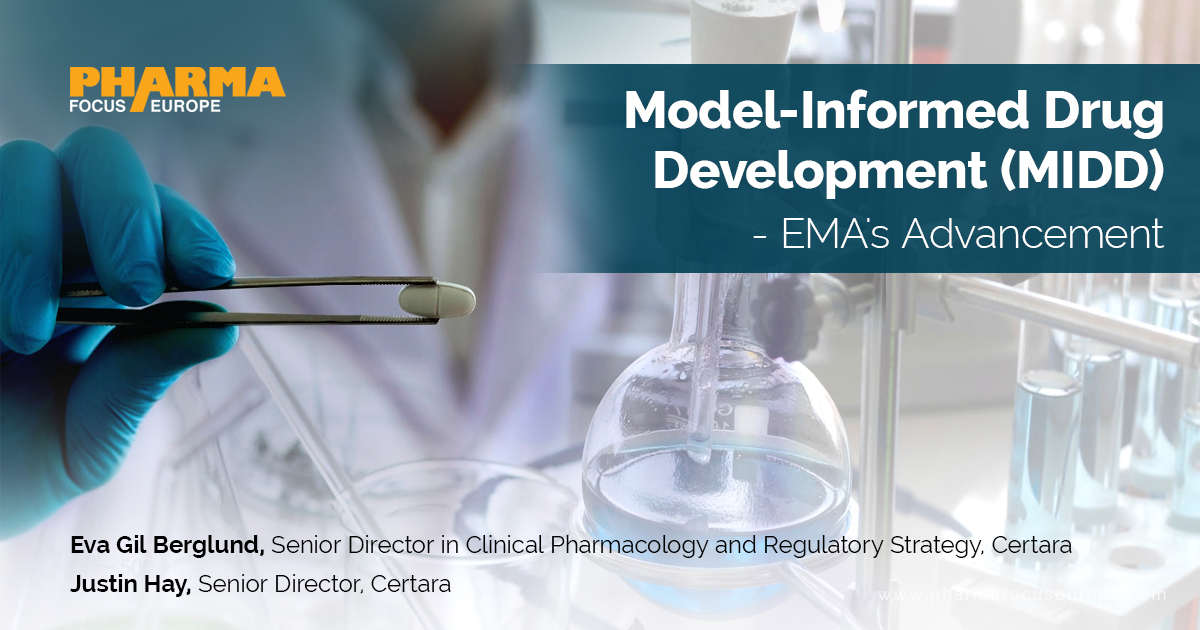Model-Informed Drug Development (MIDD) - EMA's Advancement

Strong 8k brings an ultra-HD IPTV experience to your living room and your pocket.
Authors:
Eva Gil Berglund, Senior Director in Clinical Pharmacology and Regulatory Strategy, Certara
Justin Hay, Senior Director, Certara
Modelling and simulation (M&S) plays a crucial role in drug development. It allows information from diverse sources—pre-clinical and in vitro data, early and late-stage clinical trial data, biomarkers, and efficacy outcomes—to be included with a dataset. Modelling enables researchers to visualize complex scenarios and determine what will happen if a parameter is changed in a clinical trial. It can optimize clinical study design, enable unnecessary studies to be waived, and inform risk: benefits in “what if” scenarios with specific patient populations or drug-drug interactions (DDI).
Modelling & Simulation
M&S is used in all phases of drug development in the EU, US, and UK, starting from pre-clinical pharmacokinetic (PK) and pharmacokinetic/pharmacodynamics (PK/PD) studies through clinical trials to post-marketing commitments. It is generally used to support clinical pharmacology files and labelling for new drug applications. M&S supports early dose selection based on preclinical data, PK/PD in vitro animal data and scaling approaches and helps to set the first-in-human dose. M&S also shows the impact of intrinsic factors, such as age, body weight, or organ function on PK, PK/PD, and dose-exposure-response relationships.
Dose-exposure-response analysis is used to support safety and efficacy evaluations. The target exposure range—the concentration range that produces efficacy at an appropriate safety level—is a particularly important part of the clinical pharmacology evaluation. Researchers try to keep all clinical trial participants within that dose exposure range. If the concentration is too high, they will lower the dose to try to bring it into that range.
Using physiologically based PK (PBPK) and population PK (PopPK) approaches in parallel for model-informed drug development (MIDD) is proving especially valuable. But it is important to start populating the models early using preclinical data and then adding new clinical data throughout the development process to strengthen and refine the models. The resulting models can be used to run simulations that answer questions regarding populations and situations that are difficult to study and optimize clinical study design, in addition to generating evidence.
M&S can also help to address major issues relating to clinical pharmacology, PK in the target population, and dose-exposure-response analyses. These issues arising during the assessment of a marketing authorisation application (MAA) could potentially lead to a negative opinion, rejection, or delays in product approval.1 By employing high-quality M&S and seeking scientific advice during the development process, sponsors can mitigate many issues.
EMA Adoption of M&S
M&S has become an accepted part of the new drug development process. M&S used to be a supplemental part of the dossier, but regulators now expect it to be included in the files. In fact, MAAs are rarely submitted without modelling being used to describe the PK of a new medicine.
Research at academic institutions and software companies played a significant role in advancing MIDD. Some agencies, such as the U.S. Food and Drug Administration (FDA), have also sponsored related research. In addition, several Innovative Medicines Initiative projects in the EU are focused on applications of MIDD.
During the past decade, the European Medicines Agency (EMA) has drafted many guidelines that discuss M&S approaches, published papers on MIDD, created an M&S working party (MSWP), and hosted several MIDD-centric workshops. EMA has promoted the use of MIDD in dose finding during its workshops and locally in the agencies. It has produced guidance documents on the use of MIDD approaches in paediatric drug development, DDI risk assessment, renal and hepatic impairment, obesity, and pharmacogenetics. It also has clinical guidelines that reference MIDD approaches to support dosing for oncology, HIV, and antibiotic use.
In its “Regulatory Science to 2025” strategy document, the EMA mentions modelling 37 times and specifically references its desire to “optimize capabilities in modelling, simulation and extrapolation” to drive collaborative evidence generation and improve the scientific quality of evaluations. 2
While the FDA and EMA have both embraced M&S, they take slightly different approaches. For example, the FDA always requests that sponsors provide raw data with their new drug applications (NDAs), and its internal team of pharmacometricians can reanalyse it. But the EMA generally does not currently perform its own M&S. However, the EMA did announce a pilot study in July 2022 for which it is requesting that raw data be submitted for possible
re-analysis. But the agency did not state whether it plans to conduct M&S or statistical analysis of the data.
Paediatric Drug Development
Many M&S approaches are used in paediatric drug development. Underscoring its importance, the EMA published a reflection paper in 2018, which outlined scenarios under which sponsors could use M&S to extrapolate efficacy from adults to children when developing medicines for paediatric patients.3 Most importantly, M&S is used to extrapolate from adult efficacy and safety data to determine the initial paediatric drug doses for clinical studies. M&S is also employed to optimize the blood sampling times and minimize the number of blood samples that need to be collected from paediatric patients. M&S also helps to determine how many paediatric patients need to be recruited in each age group or body weight category for a specific clinical study. Those results are included in the Paediatric Investigational Plan, which is submitted to the Paediatric Committee (PDCO), the EMA’s scientific committee responsible for activities regarding medicines for children.
All the available data are used to create and refine a dynamic paediatric model, which shows the effect of body weight or other covariates on PK parameters and dosing. M&S enables all the available data to be used in a much more efficient way.
Furthermore, by using PBPK modelling, researchers can progress beyond scaling based on body weight and factor in the paediatric patient’s maturing physiology and enzyme levels as well. Literature data can be employed to support the maturation of different enzymes in paediatric patients.
Discover more: https://www.pharmafocuseurope.com/research-development/model-informed-drug-development
Note: IndiBlogHub features both user-submitted and editorial content. We do not verify third-party contributions. Read our Disclaimer and Privacy Policyfor details.


